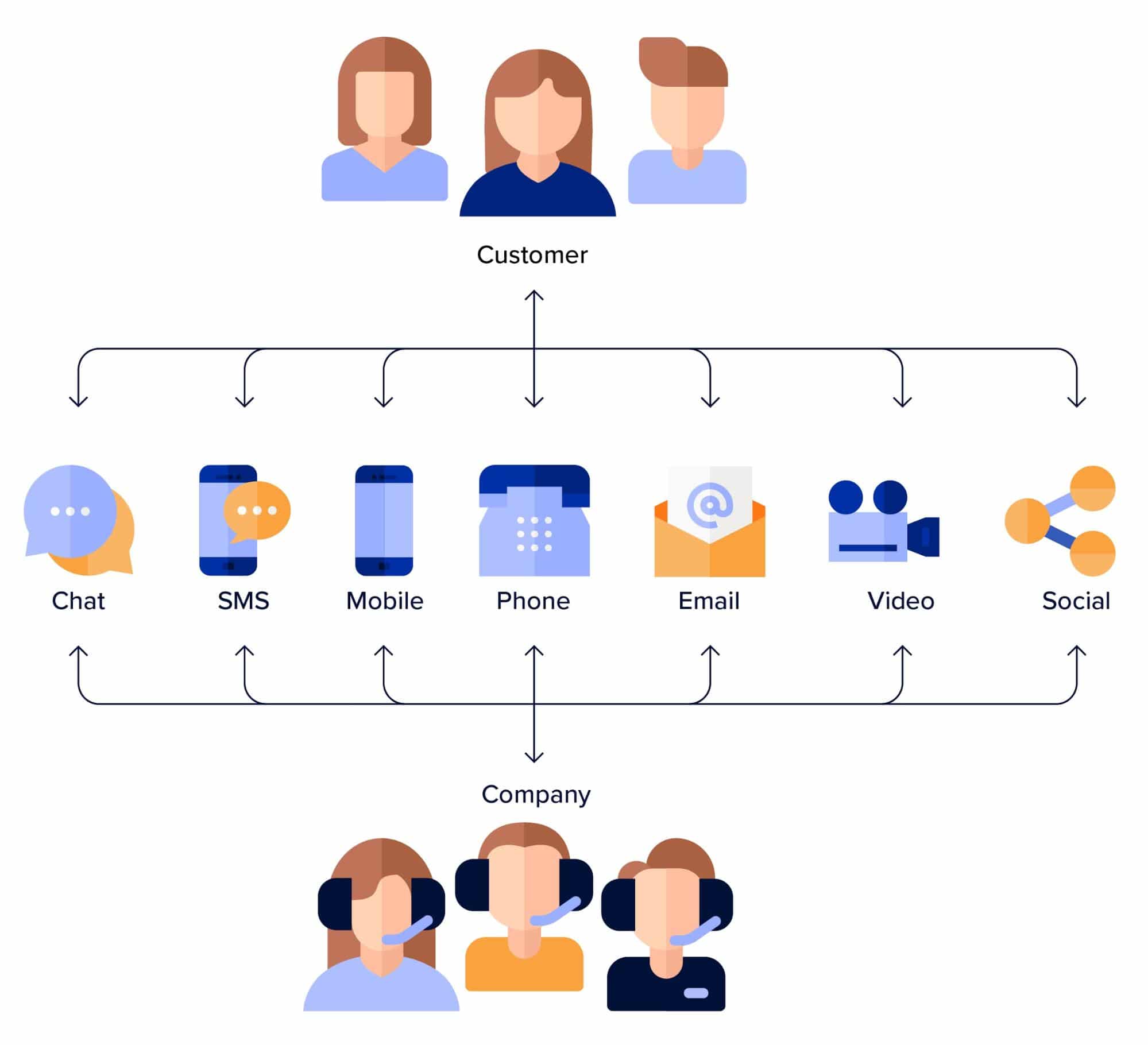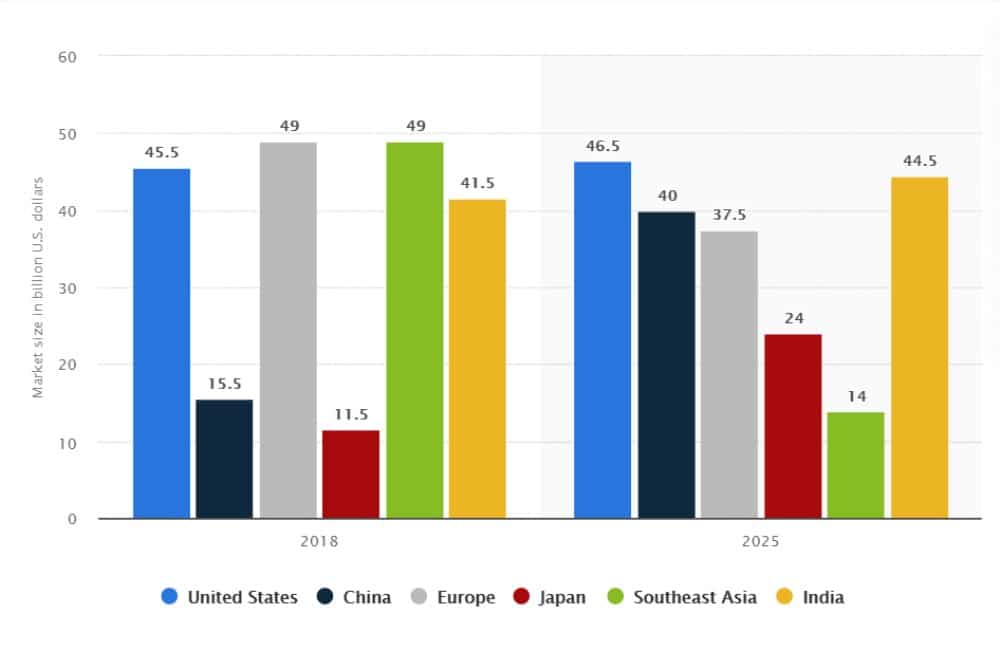At RingCentral, we’re passionate about communication. We specialise in solutions that connect people and allow them to collaborate. And the call and contact centre industry is one that’s built on communication. But it’s also a sector that often gets misunderstood. That’s why we’ve decided to build this series of posts.
In this first article in the series, we’re going to get into what call centres are, how they work, and who they serve. We’ll also look at the future of the sector in the light of tech advances and changes in society.
To make our series as insightful as possible, we’ve reached out to industry experts to input into this project:
- FM Outsource – a complete communications outsource agency. The firm handles inbound and outbound contacts across all channels. They serve a wide array of brands.
- Cymphony – Established in 2000, it primarily offers a telephone answering service for UK-based SMEs.
- Poly AI – Born out of a Cambridge research group, the company develops tech for the contact centre niche.
The knowhow of these experts provided us additional insights into the contact centre world. However, before we delve too deep, it makes sense to start with the foundations. This initial post will provide an overview of the call centre industry. We’re going to look at how the sector stands in 2020, before discussing the vital resource shared by all contact centres; people.
What Are Call or Contact Centres & What Do They Do?
Call and contact centres are ingredients of a service that many firms offer to a customer. They provide a dedicated pool of representatives to handle queries or complaints. That includes fielding inbound calls and making outbound ones.

Agents and advisors communicate via an increasing range of communication channels. Many firms let customers get in touch via webchat, email, messaging services, and more. That’s why the label “contact centre” is perhaps more apt today than that of “call centre”.
Most companies don’t run their own dedicated contact centres because of the costs in infrastructure and human resources. Instead, they outsource tasks of customer support to specialists. In each contact centre, agents could be working on multiple campaigns. That means the communications for a variety of firms may get handled under one roof. Advisors, too, may lend their expertise to more than one company on any given day.
Like all sectors, the call centre niche has its own lexicon. There are a variety of terms that are worthwhile defining before we dive into this series. Feel free to skim over this list if you wish. You can always return to it if you encounter a term that you’re not familiar with, including in latter posts.
- Agent – The most common term for a call centre worker. Agents answer or make calls and handle many other communication channels. In some circumstances, they may also get called representatives or advisors.
- Agent Group – A collection of agents who work on the same campaign or share a set of skills. The workforce at a contact centre will often get split into several agent groups.
- Artificial Intelligence (AI) – A catch-all phrase for tech solutions that simulate human intelligence. Algorithms and AI-driven software are having a profound impact on modern call centres.
- Automatic Call Distributor (ACD) – A system that queues and distributes calls to the correct agents. Contact centres can tailor ACD systems to meet the needs of individual clients.
- Call Blending – The process of combining inbound and outbound calls. Blended agents are those who handle both types of contacts. A contact centre’s systems must be able to adapt to the nature of each request as it arises.
- Call Routing – The process of directing inbound calls to the correct agent or agent group.
- Chatbots – AI-powered software solutions that “chat” online with customers. They’re also sometimes known as “virtual assistants”.
- Customer Relationship Management (CRM) System – Software that companies use to track and handle customer interactions. Such systems often get integrated with the primary contact systems used by call centres.
- Home Working – An arrangement whereby agents can log in to a call centre’s system and work remotely (i.e., at home).
- Interactive Voice Response (IVR) – A telephony system that lets callers make choices to determine how a call gets routed. They might press a keypad button or deliver a voice command to explain the nature of their call.
- Multi-Channel – A contact centre or customer support system that has many means of communication. Common channels include telephony, live chat, email, etc.
- Omni-Channel – Similar to multi-channel in that it involves many means of contact. Omnichannel support, though, is the process of making any customer service journey seamless. The premise is that it shouldn’t matter by which channel a customer reaches a contact centre.
- Post-Call Processing – The work an agent does immediately after contact with a customer. This may mean entering data, changing details in other systems, or other processes.
- Public Switched Telephone Network (PSTN) – The traditional telephony network that uses infrastructure such as phone lines.
- Quantitative Forecasting – Using data to predict future call volumes, spikes in demand, and other events.
- Unified Communications Platforms – Software platforms that integrate many channels and make switching between them easier.
- Voice Over Internet Protocol (VoIP) – Internet-based telephony. The audio of a call gets packaged as data and transmitted over an internet connection. It’s increasingly replacing PSTN.
- Workforce Management (WFM) – How contact centres arrange and distribute agents to meet demand. WFM and forecasting are closely linked.
The Call Centre Sector
The contact centre industry is a genuinely global one. According to 2017 statistics, the European call centre market generated $49 billion. On the other side of the Atlantic, the US sector was worth $45.5 billion across the same 12 months.

Source: Statista
There’s also a considerable offshore call centre market. By that, we mean when firms outsource support to countries such as India and the Philippines. It’s predicted that the outsourced market could soon be worth $82.6 billion.
Due to the universal need for customer service, all kinds of firms get served by the call centre sector. Specialist agencies within the industry work with companies of all shapes and sizes. FM Outsource, for instance, works with startups of one or two staff and multinationals alike.
Furthemore, industry research from 2019 showed a total of 931 UK businesses in the contact centre niche. Combined, those firms accounted for a total revenue of £2 billion – a figure that grew 0.5% in the past five years. And over 60,000 people worked in the sector in 2019. It’s those people who represent the most vital resource for contact centres.
The Human Voice of Call Centres
Talk to any pros in the contact centre niche and one message sings through, loud and clear. That message is that the call centre industry is a “people business”. Without their agents, the service that firms in the niche can offer clients is severely limited. You can give customers all the communication channels you like, but you still need staff to man them.
A call centre workforce can be transitory and changeable. Businesses in the niche often have a foundation of permanent agents. They may then take on extra staff as forecasting and demands dictate. Those centres that work with retailers will usually take on more agents during peak times. For retail, this is generally October to January. For pensions and finance firms, it often aligns with the end of the financial year.
Agents in a contact centre must manage high volumes of queries. At Cymphony, agents can sometimes take 30 calls per hour. In many cases, too, they will have to deal with a wide variety of different queries. Questions or requests an agent may encounter will be client-specific. Every customer is also different and presents a range of unique needs.
To best serve changeable demands, contact centre advisors must have sufficient training. All the experts we spoke to agreed on the importance of agents being well prepared. It’s for that reason that contact centre training is often intensive.
Training cannot be underestimated
FM Outsource provides a prime example. New call centre agents there go through an extensive, well-designed training and onboarding process. The firm’s ‘advisor training’ starts with a classroom element. There’s then a period of more practical learning and development.
The aim of the training is to impart company values and expectations. Jack, from FM Outsource, expects agents to focus on product knowledge, efficiency, and quality. The firm also, however, want workers to ‘feel like they’re being invested in. That’s why the final stage of training introduces agents to the contact centre in a controlled, supported fashion.
What’s more, new advisors at FM have their own area of the office. That’s where they handle their first customer contacts. A trainer is permanently on hand in that area to support new staff when needed. The new workers only move to different agent groups once they’re ready.

Company culture and employee engagement are fundamental to Cymphony’s approach to its staff. The firm now has a dedicated company trainer. And that executive-level employee has the specialist job of agent development. This is vital not only to helping workers do the best job possible, but also to staff retention. That’s something we’re going to look at in more detail in a later post.
Something else that will get specific attention later is the impact of tech on call centres. While we’re thinking of agents, though, it would be remiss not to look at the effect that AI and other tech may have on those workers.
Tech Developments & The Role of Agents
There’s been lots of discussion in recent years about the future of contact centres. Much of the conversation revolves around new tech and what it may mean for agents. There’s a school of thought that automation, and the self-service support it allows for, may usurp traditional call centres.
Jack Barmby, the founder of FM Outsource, used an analogy of call centres being an “ever-shrinking iceberg” to describe this belief. But neither he nor the other experts, however, subscribe to this school of thought. Jack was definitive: “There’s always been self-service, and tech has always changed the game…What stays the same is that people want that human touch.”
Tech, then, is not about to make 60,000 in the UK redundant as some alarmists have claimed. Instead, the greater potential of technology may be to make agents’ jobs easier. That’s certainly the aim of Poly AI’s solutions, according to their founder, Nikola Mrksic: “The technology that we are building is mostly focussed on creating opportunities for call centre agents to concentrate on high-value tasks.”
By handling what would be time or labour-intensive tasks, tech can take pressure off agents. They can then be free for more actual customer interactions or functions that need genuine human intelligence.
But just how technology will shape the future of contact centres still deserves more discussion. That’s why a later post in this series will tackle the issue head-on. When it comes to the workers on the call centre frontline, though, new tech definitely shouldn’t be seen as a threat.
Contact Centres – A People Business at the Cutting-Edge of Technology
Hopefully, this first post in our call centre series has whetted your appetite. It should certainly have demonstrated that the sector is a nuanced and important one. Many thousands of people, after all, rely on the industry for their livelihood. From frontline agents to executives and managers, workers are the primary resource for contact centres. Hiring and retaining the right people is critical to a centre’s success.
Positioning those individuals to be best able to serve customers is equally vital. Developing company culture, training them well, and supporting them with tech are three paths that firms take. In the later posts of this series, we’ll look at all those areas and more. The next post, though, will focus on the calls that contact centres handle. Specifically, it looks at the balance of inbound and outbound calls and how that might change. So look out for that.
Originally published Jun 02, 2020, updated Jan 16, 2023
